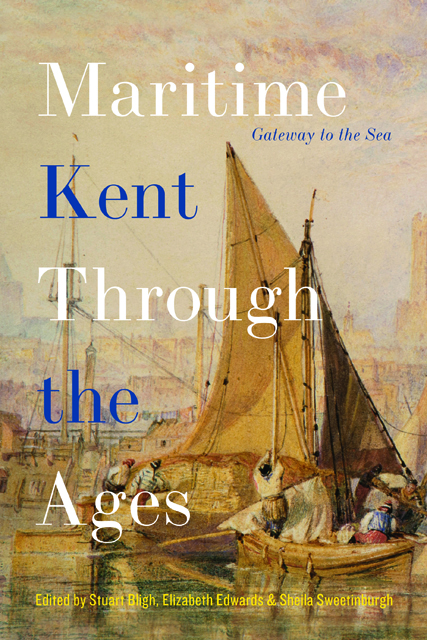1 - Introduction
Published online by Cambridge University Press: 20 December 2023
Summary
There has been no published maritime history of Kent, which is surprising considering the importance and variety of the county’s maritime heritage. The focus for Kent’s history is more often on the county’s wider role as the thoroughfare between London and the Continent, as the ‘Garden of England’ supplying fruit and vegetables to London and other large cities, as one of the major early industrial counties with its Wealden iron and the cloth industry, or as the home of the Anglican Church at Canterbury.
This book seeks to redress that balance. It is not meant to be a comprehensive maritime history of Kent but does cover a wide variety of subject areas from prehistory to the contemporary. These include the influence of topography, Kent’s unique and important role in the development of the Royal Navy, the evolution of maritime communities, the impact of different races and cultures, and the role of women. There are both local and national perspectives to illustrate how Kent, as a maritime and coastal county, has had a unique and significant impact on the history of this country, Europe and the world.
As Chapter 2 explains, Kent’s topography has been a key factor in the county’s development and maritime importance. It juts out into the sea at the point where the North Sea meets the English Channel and so is surrounded by perhaps the most important stretch of water in the United Kingdom. Its southern coast faces the Channel, which has been a major route for seaborne traffic over hundreds of years, and to the north the Kent coast forms the southern boundary of the Thames Estuary, the gateway to London. In total the coastline is 202 miles long, one of the longest in England, with eight of the thirteen historic boroughs in the county bordering the sea. The narrow strait between Dover and Calais is the shortest sea crossing from the UK to continental Europe at just twenty-one miles.
This unique position, particularly the close proximity to both London and continental Europe, has meant that the county has been of strategic maritime importance since the Romans landed in 55 BC.
- Type
- Chapter
- Information
- Maritime Kent through the AgesGateway to the Sea, pp. 1 - 22Publisher: Boydell & BrewerPrint publication year: 2021

